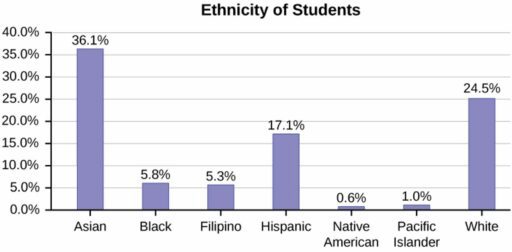Table of Contents
Data structures are the backbone of effective software development, and Python offers a rich ecosystem of built-in and custom data structures to optimize your code for various applications. Mastering these structures and their associated algorithms is crucial for solving complex problems efficiently and acing coding interviews. This comprehensive guide delves into the nuances of Python data structures, from the foundational elements to advanced techniques, and provides insights into real-world applications and best practices for Python developers.
Key Takeaways
- Understanding and implementing Python’s built-in and custom data structures are crucial for efficient data analysis and problem-solving.
- Advanced data structures like graphs, trees, and heaps, along with their algorithms, are essential for performance-critical applications.
- Writing efficient Python code involves not only code optimization techniques but also a deep understanding of time and space complexity.
- Preparation for coding interviews requires mastery of common data structures, algorithmic problem-solving strategies, and the ability to handle complex challenges.
- Real-world applications of Python data structures span across industry projects, with case studies highlighting successful implementations and the importance of choosing the right structure.
Understanding the Basics of Python Data Structures

Exploring Built-in Data Types
Python’s versatility is largely due to its rich set of built-in data types. Understanding these data types is crucial for effective programming and data manipulation. The core data types include Numeric types such as integers and floats, Sequence types like lists and strings, and more complex structures such as dictionaries and sets.
- Numeric: Integers, Floats, Complex numbers
- Sequence Type: Strings, Lists, Tuples
- Boolean: True or False values
- Set: Unordered collections of unique elements
- Dictionary: Key-value pairs
- Binary Types: Data encoded in binary form (bytes, bytearray, memoryview)
Each data type serves a specific purpose and has its own set of operations and methods. For instance, lists are mutable and can be altered after creation, while tuples are immutable. Dictionaries are incredibly useful for fast data retrieval through keys. It’s important to choose the right data type for the task at hand to ensure efficient and readable code.
While the built-in data types cover a wide range of use cases, sometimes custom data structures are needed to solve particular problems. In such cases, Python’s class mechanism allows for the creation and manipulation of complex data structures tailored to specific requirements.
Implementing Custom Data Structures
While Python’s built-in data types are powerful, mastering custom data structures allows for tailored solutions that can significantly optimize performance and efficiency. Custom data structures are designed to address specific problems by considering the operations that need to be performed and the most frequent use-cases. For instance, a custom data structure can be implemented to handle complex data relationships that are not efficiently managed by standard types.
Creating a custom data structure involves understanding the underlying data and its intended manipulation. This often starts with data structuring, which is the process of converting raw, unstructured information into a usable form. The table below outlines the steps involved in this process:
| Step | Description |
|---|---|
| 1 | Identify the data and its sources |
| 2 | Define the data relationships |
| 3 | Choose the appropriate data structure |
| 4 | Implement the data structure in Python |
| 5 | Test and optimize the data structure |
By focusing on the specific needs of the application and the nature of the data, developers can create data structures that are both powerful and efficient.
As you delve into custom data structures, remember that the goal is not just to store data, but to facilitate its analysis and manipulation. This is particularly important in fields such as business intelligence and data science, where the ability to quickly access and analyze data can provide a competitive edge.
Analyzing Data with Tuples, Lists, and Dictionaries
In the realm of data analysis, Python’s built-in data structures like tuples, lists, and dictionaries are indispensable tools. Tuples offer immutability and are often used for fixed data sequences. Lists provide flexibility with their dynamic size and ability to contain heterogeneous elements. Dictionaries shine with their key-value pairing, enabling fast lookups and data organization.
- Tuples: Ideal for read-only collections of items.
- Lists: Best for collections that require frequent modification.
- Dictionaries: Optimal for associative arrays and hash tables.
Embracing these data structures can significantly enhance your data wrangling capabilities. They allow you to structure your data in a way that is both efficient and intuitive, making the process of data analysis smoother and more effective.
Understanding how to leverage each structure effectively is key to extracting meaningful insights from your data. For instance, dictionaries are particularly useful when dealing with large datasets where quick access to elements is crucial. Below is a table illustrating typical operations and their time complexity for lists and dictionaries, providing a glimpse into performance considerations:
| Operation | List | Dictionary |
|---|---|---|
| Access | O(1) | O(1) |
| Search | O(n) | O(1) |
| Insert | O(n) | O(1) |
| Delete | O(n) | O(1) |
By mastering these structures, you can tackle complex data analysis tasks with confidence and precision.
Advanced Data Structures and Algorithms in Python

Graph Algorithms and Their Implementations
Graph algorithms are essential for solving complex problems in various domains such as social networking, mapping, and network analysis. Understanding and implementing these algorithms can significantly enhance the performance of applications. For instance, algorithms like Dijkstra’s or A* are pivotal in finding the shortest path in a network, which is a common requirement in GPS and routing applications.
When dealing with graph algorithms, it’s crucial to comprehend the trade-offs between different data structures. A graph can be represented using an adjacency list or an adjacency matrix, each with its own advantages in terms of space and time complexity. Here’s a quick comparison:
| Representation | Space Complexity | Time Complexity (for adding an edge) |
|---|---|---|
| Adjacency List | O(V + E) | O(1) |
| Adjacency Matrix | O(V^2) | O(1) |
By mastering graph algorithms, developers can write code that not only meets the functional requirements but also operates with optimal efficiency. This is particularly important in applications where performance is critical.
It’s also important to use the right tools for evaluating the efficiency of your algorithms. Big O notation is a fundamental tool for this purpose, allowing you to articulate and measure the efficiency of your code. Whether you’re working with arrays, linked lists, or hash tables, understanding their impact on your algorithm’s performance is key to writing better code.
Sorting Algorithms: From Basic to Advanced
Sorting algorithms are fundamental for optimizing data processing and retrieval. Understanding the efficiency of different sorting algorithms is crucial for selecting the right one for your task. The Big O notation is a standard metric used to describe the performance of an algorithm, particularly its runtime and space requirements.
- Bubble Sort: Simple but inefficient for large datasets (O(n^2))
- Quick Sort: Efficient on average cases (O(n log n))
- Merge Sort: Consistently efficient (O(n log n)), good for large datasets
- Heap Sort: Good for real-time systems (O(n log n))
Emphasizing the importance of algorithm efficiency can’t be overstated. A well-chosen algorithm can significantly reduce the time and resources required for data processing.
When diving into sorting algorithms, it’s essential to consider not only the average-case performance but also the worst-case scenarios. Some algorithms, like Quick Sort, have excellent average performance but can degrade to O(n^2) in the worst case. Others, like Merge Sort, maintain their efficiency regardless of the dataset’s initial order. By mastering these concepts, you can write code that runs exponentially faster and is more suited to the demands of modern applications.
Efficient Data Manipulation with Trees and Heaps
Trees and heaps are fundamental to efficient data manipulation in Python. Binary trees, for instance, are pivotal in operations like searching, insertion, and deletion, offering on average logarithmic time complexity. Heaps, particularly binary heaps, are essential for priority queue implementations and efficient sorting algorithms like Heap Sort.
When considering the use of trees and heaps, it’s important to understand their properties and typical use cases. For example, a binary search tree (BST) is a binary tree that maintains a specific order among elements, facilitating quick search operations. On the other hand, a binary heap is a complete binary tree which is useful for sorting and implementing priority queues.
Here’s a brief comparison of operations in a binary search tree and a binary heap:
| Operation | Binary Search Tree | Binary Heap |
|---|---|---|
| Insertion | O(log n) | O(log n) |
| Deletion | O(log n) | O(log n) |
| Search | O(log n) | N/A |
In practice, the choice between using a tree or a heap structure depends on the specific requirements of the application. Trees are versatile and can be used in various ways, while heaps are more specialized but extremely efficient for certain tasks.
Understanding when and how to implement these structures can significantly optimize your Python programs. The Heap Sort algorithm, for instance, is a prime example of how a binary heap can be leveraged for efficient sorting, as it builds a heap from the input data and then sorts it.
Best Practices and Writing Efficient Python Code

Code Optimization Techniques
Optimizing code is essential for creating efficient and scalable applications. Understanding the trade-offs between different coding approaches is crucial for developers. By evaluating the efficiency of your code using Big O notation, you can identify bottlenecks and improve performance. For instance, the choice between arrays, linked lists, and hash tables can have a significant impact on the speed of your code.
- Use Big O notation to evaluate code efficiency.
- Consider the data structure’s impact on performance.
- Apply recursion for complex problem-solving.
Mastering code optimization not only enhances the application’s performance but also contributes to a more maintainable and elegant codebase.
It’s important to remember that algorithms and data structures are not just theoretical concepts; they are tools that, when mastered, enable you to write code that is faster and more effective. This is especially relevant in the context of web and mobile applications, where performance can be critical. The techniques discussed are applicable across various programming languages, with examples in this guide provided in Python.
Understanding Time and Space Complexity
When mastering data structures and algorithms in Python, understanding time and space complexity is crucial. Time complexity refers to the amount of time an algorithm takes to run as a function of the length of the input, while space complexity refers to the amount of memory an algorithm uses during its execution.
To truly grasp the efficiency of your code, you must be familiar with Big O notation. This mathematical concept is the primary tool for evaluating algorithms and can guide you in optimizing both time and space usage.
Here’s a brief overview of common Big O notations and their implications:
- O(1): Constant time – the algorithm takes the same amount of time regardless of input size.
- O(log n): Logarithmic time – the algorithm’s run time increases slowly as the input size increases.
- O(n): Linear time – the algorithm’s run time increases proportionally to the input size.
- O(n log n): Quasilinear time – the algorithm’s run time increases slightly faster than linear time.
- O(n^2): Quadratic time – the algorithm’s run time increases exponentially with the input size.
It’s essential to compare the most desirable to the least desirable Big O Notations for a given data structure or algorithm. This comparison helps in selecting the most efficient approach for your problem-solving needs. Remember, the goal is to write code that is not only correct but also optimized for performance.
Writing Clean and Maintainable Code
Writing clean and maintainable code is essential for the long-term success of any software project. Good code should not only function correctly but also be easy to understand and modify. This involves adhering to coding standards, using meaningful variable names, and keeping functions focused on a single task.
- Refactor regularly to improve code readability and reduce complexity.
- Comment your code where necessary to explain the ‘why’ behind complex logic.
- Write tests to ensure your code behaves as expected and to facilitate future changes.
- Review code with peers to catch issues early and share knowledge.
Embrace simplicity and strive for elegance in your code. Complex solutions are not always better; often, the simplest solution is the most effective.
By applying these principles, developers can create software that is not only robust and reliable but also a pleasure to work with. This leads to software that is more scalable, with fewer bugs, and requires a minimal unit testing strategy. As you gain experience, you’ll learn to weigh the pros and cons of various code alternatives, making educated decisions that best fit the given situation.
Preparing for Coding Interviews with Python Data Structures

Mastering Common Interview Questions
Interviews for technical roles often include a segment where your understanding of data structures is assessed. Being well-prepared for these questions is essential for success. The course material we provide delves into the most frequently asked questions about stacks, queues, lists, and trees, ensuring you have a solid grasp of these concepts.
When it comes to stacks, knowing when to use them is as important as understanding how they work. Scenarios such as function call management, syntax parsing, and maintaining histories in applications are perfect examples of stack applications. We break down each scenario to highlight the strengths of using stacks.
Practice is key to mastering interview questions. We recommend tackling a variety of problems to build confidence and proficiency. Our resources include a list of over 50 data structure and algorithm problems, tailored to help you prepare for your technical interviews.
Remember, interviews are not just about technical knowledge; they also test your problem-solving abilities and how you approach debugging. Overcoming challenges like impostor syndrome is part of the journey, and we provide insights on navigating the tech industry and securing high-paying jobs.
Algorithmic Problem-Solving Strategies
Developing effective algorithmic problem-solving strategies is crucial for tackling complex coding challenges. Understanding the Big O notation is essential for evaluating the efficiency of algorithms. It allows you to articulate the performance of your code and guides you in optimizing it for speed and resource usage.
When approaching a problem, consider the data structures that best fit the task. Arrays, linked lists, and hash tables each have unique characteristics that can influence the efficiency of your solution. For example:
- Arrays allow quick access to elements but can be costly to resize.
- Linked lists offer efficient insertion and deletion but slower element access.
- Hash tables provide fast lookups but require careful handling of collisions.
Recursion is a powerful tool that, when applied correctly, can simplify the problem-solving process and lead to algorithms that are both elegant and efficient.
Finally, practice is key to mastering these strategies. Solve a variety of problems to understand the practical application of theoretical concepts. This hands-on experience will prepare you for real-world coding challenges and interviews, where you’ll need to weigh the pros and cons of different approaches to find the most suitable solution.
Tips for Handling Complex Coding Challenges
When facing complex coding challenges, it’s crucial to approach them with a systematic strategy. Break down the problem into smaller, manageable parts and tackle each segment one at a time. This not only makes the problem less intimidating but also allows for easier debugging and testing of individual components.
- Understand the problem: Ensure you comprehend every aspect of the challenge before you start coding.
- Plan your approach: Outline the steps you need to take to solve the problem.
- Write pseudocode: It helps to organize your thoughts and acts as a blueprint for your actual code.
- Test as you go: Regularly test each part of your code to catch errors early.
- Optimize: Once you have a working solution, look for ways to optimize for efficiency.
Remember, clarity of thought and a methodical approach are your best tools when dealing with complex problems. Keeping your code clean and well-commented can also aid significantly in understanding and refining your solution.
Real-world Applications of Python Data Structures

Data Structures in Industry Projects
In the realm of industry projects, data structuring plays a pivotal role in the success of software applications. The choice of the right data structure can significantly enhance the performance and scalability of a project. For instance, social networks and mapping software often rely on advanced data structures like binary trees and graphs to manage complex data efficiently.
The journey from raw, unstructured data to a well-organized format is crucial for any application. It involves extracting relevant data and organizing it in a way that aligns with the analytical model being used. This transformation is essential for achieving uniformity and facilitating easier data manipulation.
Here’s a glimpse into how various industries utilize data structures:
- Social Media Platforms: Utilize graphs for friend connections and content feeds.
- Financial Services: Employ trees for decision processes and risk assessment.
- E-commerce: Leverage hash tables for product catalogs and customer databases.
- Healthcare: Use queues for patient scheduling and prioritization.
Embracing the right data structure is not just about technical efficiency; it’s about unlocking the potential of data to drive innovation and solve real-world problems.
Case Studies: Successful Implementations
The real-world efficacy of Python data structures is best illustrated through case studies that demonstrate their successful implementations. These studies not only highlight the versatility of Python in solving complex problems but also provide insights into the strategic thinking behind choosing the right data structure for a given scenario.
For instance, in the realm of data science, a study titled ‘Top 12 Data Science Case Studies: Across Various Industries’ delves into a variety of applications, from credit risk modeling to real-time data processing. Each case study underscores the critical role of data structures in achieving efficient and innovative solutions.
The thoughtful application of data structures is pivotal in transforming raw data into actionable insights and strategic business outcomes.
Moreover, the adoption of Python data structures extends beyond data science. Industries ranging from finance to healthcare leverage these tools for data wrangling, predictive modeling, and even real-time analytics. The table below summarizes some of the key projects and their focus areas:
| Project Title | Domain | Key Focus |
|---|---|---|
| Credit Risk Modelling | Finance | Risk Assessment |
| Real-Time Data Processing | Technology | Stream Analytics |
| Flight Price Prediction | Travel | Machine Learning |
These examples serve as a testament to the power of Python’s data structures in facilitating complex operations and contributing to the advancement of various industries.
Choosing the Right Data Structure for Your Application
Selecting the appropriate data structure is a critical decision that can significantly impact the performance and scalability of your application. The right choice hinges on understanding the nature of the operations and the data involved. For instance, if frequent insertions and deletions are expected, a linked list might be preferable over an array. Conversely, for rapid access to elements by index, an array or a hash table could be the best fit.
Here’s a simple guide to help you decide:
- Arrays: Best for indexed access and static data sets.
- Linked Lists: Ideal for dynamic data with frequent insertions and deletions.
- Stacks: Suited for last-in, first-out (LIFO) operations.
- Queues: Designed for first-in, first-out (FIFO) operations.
- Hash Tables: Excellent for rapid data retrieval through keys.
- Trees: Useful for hierarchical data and sorted data access.
- Graphs: Perfect for representing relationships and networked data.
Remember, the complexity of operations in your application should guide the data structure choice. A mismatch can lead to inefficient algorithms and poor performance. Always consider the trade-offs between time and space complexity when making your decision.
Ultimately, the goal is to balance efficiency with maintainability. A well-chosen data structure not only optimizes performance but also simplifies the codebase, making it easier to understand, modify, and debug. As you gain experience, you’ll develop an intuition for selecting the most suitable data structure for the task at hand.
Conclusion
In conclusion, mastering data structures in Python is a journey that can significantly enhance your programming skills and problem-solving abilities. Throughout this comprehensive guide, we’ve explored various courses and resources that offer practical, hands-on experience with Python’s built-in data structures, as well as advanced algorithms and techniques. From understanding the basics to tackling complex data analysis and coding interviews, the knowledge gained here is invaluable for both beginners and intermediate developers. Remember, the choice of data structure can greatly impact the efficiency of your programs, so continue practicing, learning from real-world code challenges, and applying these concepts to become proficient in Python data structures.
Frequently Asked Questions
What are the core data structures in Python?
The core data structures in Python include lists, dictionaries, sets, and tuples. These built-in data types are essential for performing various data manipulations and are the foundation for more complex data structures.
Can Python be used for implementing advanced data structures?
Yes, Python can be used to implement advanced data structures such as graphs, trees, and heaps. It provides a flexible and dynamic environment that facilitates the implementation of various algorithms and data structures.
How important are data structures for coding interviews?
Data structures are critically important for coding interviews as they form a vital benchmark of computer science knowledge. Mastery of data structures can greatly influence the outcome of an interview.
What are some best practices for writing efficient Python code?
Best practices for writing efficient Python code include understanding the time and space complexity of operations, writing clean and maintainable code, and adopting code optimization techniques to improve performance.
Are there any courses that focus on data structures in Python?
Yes, there are several courses available that focus on data structures in Python, ranging from those that cover the basics to those that delve into more complex algorithms and data structures for interview preparation.
What real-world applications can Python data structures be used for?
Python data structures can be used in various real-world applications such as data analysis, machine learning, web development, and automation. Choosing the right data structure is crucial for the performance and scalability of an application.





